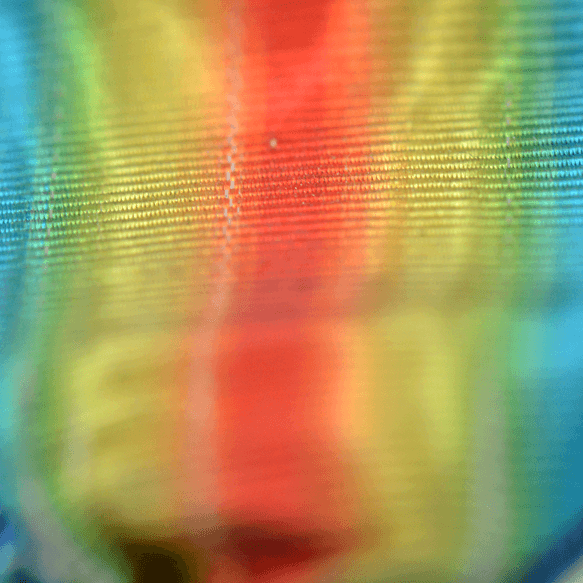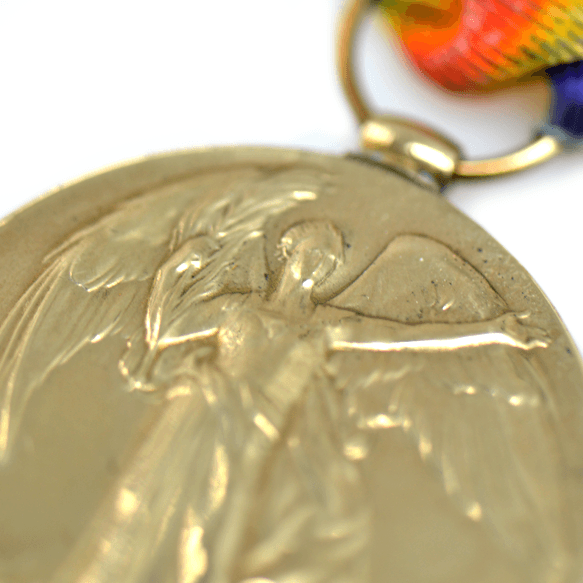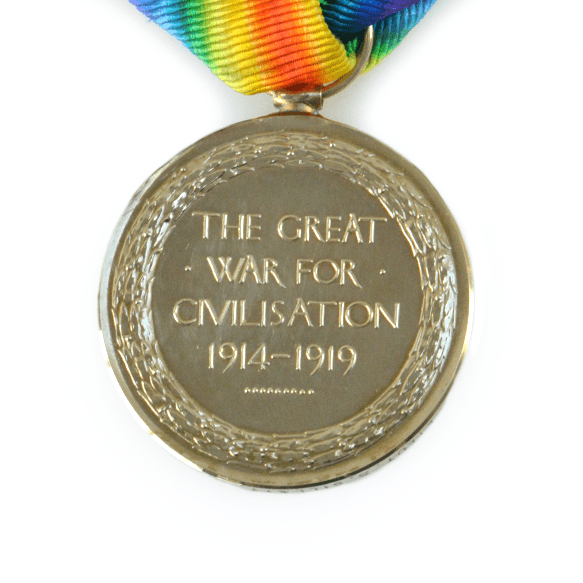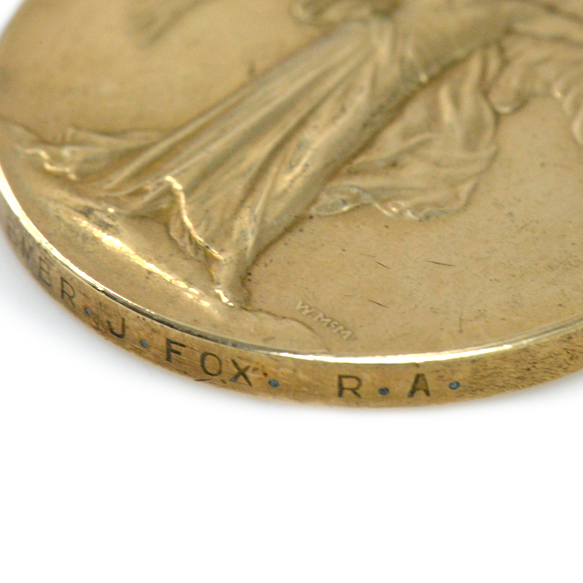Victory Medal
At the Treaty of Versailles in 1919 it was agreed that all Allies would award a similar medal to all people who had served in a 'theatre of war'.
The gold wash that decorated the surface of the medal was easily removed, even by cleaning. Many people felt that the Victory Medal wasn't a worthy award for the bravery of people who had fought. The Medal was never awarded alone. It was always awarded at least with the British War Medal.


Ribbon View
All Allied Victory medals have the same rainbow-coloured ribbon. This was chosen to reflect friendship across all countries. The ribbon is broader than that of other First World War medals.

Suspension View
A simple suspension of a circular ring was chosen to make the medal look elegant.

Obverse View
The obverse side of the medal shows Victory. She is a classical goddess, called Nike by Ancient Greeks and Victoria by the Romans. The British Victory Medal shows Victory standing with one arm outstretched and holding a palm branch in the other. The palm is a symbol of peace. Other countries chose to have slightly different images of Victory.

Reverse View
The reverse of the medal has the words "The Great War for Civilisation 1914-1919" on it. This was what people called the First World War at the time.
The words are within a laurel wreath, which is a symbol of Victory. The date extended as far as 1919 so that soldiers who had fought in the Russian Civil War (also known as the Revolution) could be awarded them too. For countries that spoke languages other than English, the words were translated.

Features View
The recipient's service number, rank, name and unit were impressed on the rim of the Victory Medal.

Victory Medal
At the Treaty of Versailles in 1919 it was agreed that all Allies would award a similar medal to all people who had served in a 'theatre of war'.
The gold wash that decorated the surface of the medal was easily removed, even by cleaning. Many people felt that the Victory Medal wasn't a worthy award for the bravery of people who had fought. The Medal was never awarded alone. It was always awarded at least with the British War Medal.
-

Ribbon
All Allied Victory medals have the same rainbow-coloured ribbon. This was chosen to reflect friendship across all countries. The ribbon is broader than that of other First World War medals.
-

Suspension
A simple suspension of a circular ring was chosen to make the medal look elegant.
-

Obverse
The obverse side of the medal shows Victory. She is a classical goddess, called Nike by Ancient Greeks and Victoria by the Romans. The British Victory Medal shows Victory standing with one arm outstretched and holding a palm branch in the other. The palm is a symbol of peace. Other countries chose to have slightly different images of Victory.
-

Reverse
The reverse of the medal has the words "The Great War for Civilisation 1914-1919" on it. This was what people called the First World War at the time.
The words are within a laurel wreath, which is a symbol of Victory. The date extended as far as 1919 so that soldiers who fought in the Russian Civil War (also known as the Revolution) could be awarded them too. For countries that spoke languages other than English, the words were translated.
-

Features
The recipient's service number, rank, name and unit were impressed on the rim of the Victory Medal.